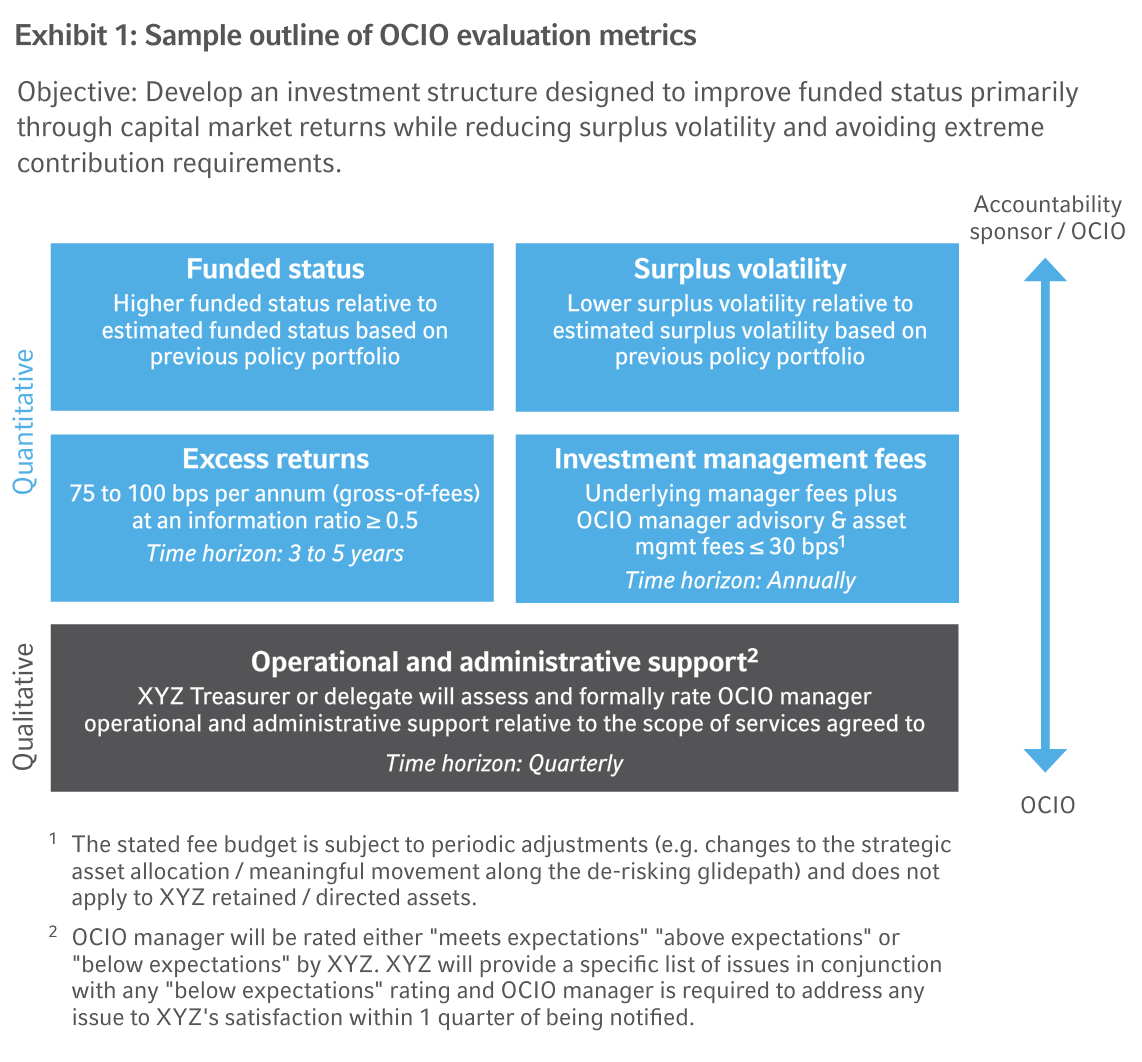How do you measure success in the subjective world of outsourced-CIO (OCIO)? It’s easier said than done, according to Russell Investments’ Bob Collie and Peter Corippo.
Many elements—such as the quality of administrative and operations teams, the ability to suggest “ongoing enhancements,” the proactive identification of evolving issues, and the ability to work within each client’s culture—can only be evaluated subjectively, the pair wrote.
“‘Did we achieve our desired outcome?’ is not the same question as ‘Did the OCIO provider do a good job?’.”Collie, Russell’s chief research strategist, and OCIO Senior Strategist Corippo added that it can be difficult to assign responsibility for decision making, as the investor and the OCIO provider often jointly make important decisions. Assessing the success or failure of strategic asset allocation is also “less straightforward” than a single asset class’ performance, the duo continued.
“While OCIO often looks past a market benchmark to the investor’s end objectives, ‘Did we achieve our desired outcome?’ is not the same question as ‘Did the OCIO provider do a good job?’,” Collie and Corippo said.
For these reasons, the authors argued that comparisons across OCIO providers aren’t strictly apples-to-apples, and difficult to encompass in league tables.
Instead, comparisons and evaluations should be multidimensional, focusing on “measures that fall within the OCIO provider’s control,” Collie and Corippo said.
Investors could also implement secondary objectives to assess more subjective elements beyond strictly quantitative performance benchmarks, and whether the OCIO helped the fund get closer to its end goals.
Russell emphasized that these quantitative and qualitative metrics should be agreed up front, and built into the OCIO provider’s reporting processes.
Russell is one of the largest OCIO providers, with more than $100 billion in outsourcing assets under management across 375 clients, according to CIO’s most recent survey of the sector.
 Source: Russell Investments
Source: Russell Investments
Related: 2016 Outsourced-Chief Investment Officer Survey & 2016 Outsourced-Chief Investment Officer Vendor Ratings
